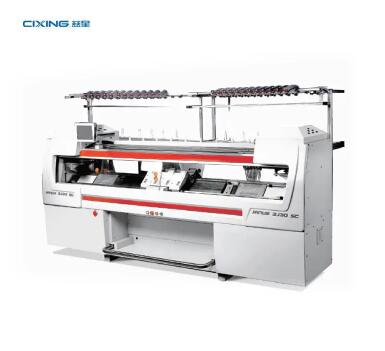How Knitting Machines Are Shaping the Future of Sustainable Textiles
2024-08-24
Introduction:
As the textile industry grapples with the environmental impact of fast fashion, there is a growing emphasis on sustainable production methods. Knitting machines, with their ability to produce fabrics efficiently and with minimal waste, are emerging as a crucial tool in the drive towards sustainability. This blog will explore how knitting machines contribute to sustainable textile production, the benefits of zero-waste knitting, and the future of eco-friendly fashion.

1. The Role of Knitting Machines in Sustainable Production:
Knitting machines are inherently more sustainable than traditional weaving methods, as they produce fabric by interlocking loops of yarn, which minimizes waste. In contrast, weaving involves cutting and sewing, which can lead to significant fabric waste. By using knitting machines, manufacturers can reduce waste, conserve resources, and lower their environmental footprint.
2. Zero-Waste Knitting: A Game Changer for the Industry
- Fully Fashioned Knitting:
Fully fashioned knitting is a technique where garments are knitted to shape, eliminating the need for cutting and sewing. This method reduces fabric waste and allows for more precise control over the fit and design of the garment. Fully fashioned knitting is ideal for producing sweaters, dresses, and other garments that require a tailored fit.
- 3D Knitting:
3D knitting is an innovative approach that uses computerized knitting machines to produce seamless, three-dimensional garments. This technique allows for the creation of complex shapes and structures without seams, reducing waste and improving the garment's comfort and durability. 3D knitting is used in sportswear, footwear, and fashion, offering a sustainable alternative to traditional garment construction.
3. Reducing Energy Consumption with Knitting Machines:
Knitting machines are designed to be energy-efficient, consuming less power compared to other textile manufacturing processes. Advances in technology have led to the development of machines with lower energy consumption and optimized production cycles, further reducing their environmental impact. By adopting energy-efficient knitting machines, manufacturers can lower their carbon footprint and contribute to a more sustainable textile industry.
4. Sustainable Materials and Knitting Machines:
The use of sustainable materials is a key component of eco-friendly textile production. Knitting machines can work with a wide range of sustainable fibers, including organic cotton, recycled polyester, and biodegradable yarns. These materials are less harmful to the environment, and when combined with the efficient production capabilities of knitting machines, they offer a powerful solution for sustainable fashion.
5. The Future of Sustainable Fashion with Knitting Machines:
- Customization and On-Demand Production:
Knitting machines enable on-demand production, allowing manufacturers to produce garments only when there is a demand, reducing overproduction and waste. Customization options also allow consumers to choose specific designs, sizes, and colors, minimizing the risk of unsold inventory and promoting a more sustainable consumption model.
- Innovations in Knitting Technology:
Ongoing research and development in knitting technology are paving the way for even more sustainable practices. Innovations such as biodegradable knitting machines, waterless dyeing techniques, and smart textiles are on the horizon, promising to further reduce the environmental impact of textile production.
Conclusion:
Knitting machines are playing a vital role in the shift towards sustainable textile production. By minimizing waste, reducing energy consumption, and enabling the use of sustainable materials, these machines are helping to create a more eco-friendly fashion industry. As technology continues to advance, knitting machines will undoubtedly become an even more integral part of sustainable fashion, paving the way for a future where style and sustainability go hand in hand.


